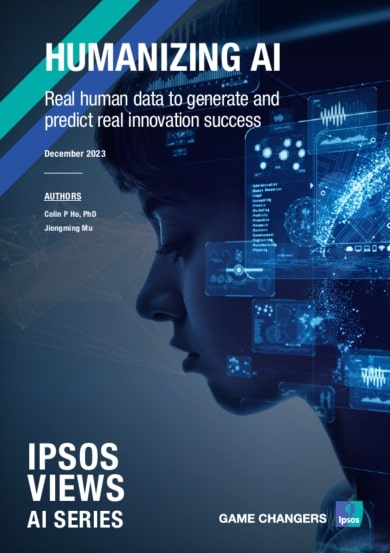Humanizing AI: Real human data to generate and predict real innovation success
Unlock the secrets of innovation success with AI by infusing models with real human data, as 'Humanizing AI' reveals the pivotal role authentic interactions play in predicting the next big thing.
 Humanizing AI: Real Human Data to Generate and Predict Real Innovation Success explores the importance of using real human data to train AI models for innovation success. AI presents an opportunity to improve the speed, and potentially, the success rate of new innovations, and how we go about doing this will determine whether we succeed.
Humanizing AI: Real Human Data to Generate and Predict Real Innovation Success explores the importance of using real human data to train AI models for innovation success. AI presents an opportunity to improve the speed, and potentially, the success rate of new innovations, and how we go about doing this will determine whether we succeed.
Brains are like sponges; they absorb what they are exposed to and AI is no different. The development of AI requires data, and the quality of the data determines the quality of the AI model. There are two main forms of learning for AI models: supervised learning, where a human teaches the AI what to learn, and self-supervised learning, where the AI is fed with a large amount of text to generate predictions.
New product ideas are more likely to succeed if the ideation and evaluation phases are grounded in data reflecting consumers’ intrinsically human needs and desires. This data needs to be timeless, or at minimum, up to date. As data is so central to AI, Humanizing AI starts by explaining how training data determines the accuracy of its model.
For this reason, off-the-shelf AI models have their limitations because what is needed is real consumer data to generate and predict better innovations. Ipsos, for example, uses human reactions to new product concepts to train AI models for concept evaluation.
Humanizing AI calls for the use real human data to better understand and predict real human behavior. By incorporating relevant, representative, and timeless data, AI models can be more accurate and effective in driving innovation success.
Key takeaways
- The quality of training data is crucial for building intelligent AI models. The data needs to be relevant, representative, and timeless.
- Off-the-shelf AI models, like large language models (LLMs), may have limitations in capturing the essence of real human behavior and needs. Humanizing AI by training it with real consumer data can lead to better innovation success.
- Generative AI can be used in the ideation phase of innovation to develop new product ideas, while analytical AI can be used in the evaluation phase to predict market potential.
- Real human data, including consumer reactions and verbatim responses, can be used to train AI models and improve their accuracy in predicting innovation success.

